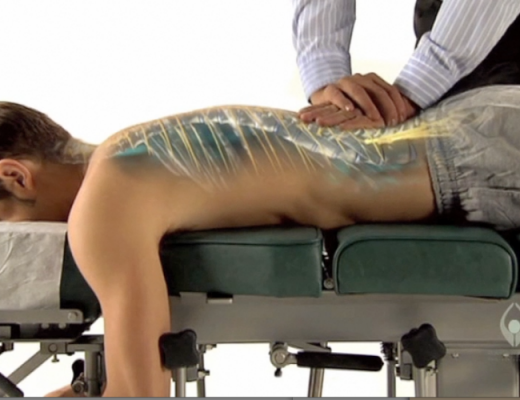Chiropractic has its unique place in the world of healthcare. You’ll find some chiropractors serving as primary physicians, some identifying as physical therapists with an edge, and others gurus of nutrition and holistic remedies. This broad spectrum of offerings leads the public to often misunderstand, stereotype, or even ostracize the profession. But when someone finds the right chiropractor for them, it’s like finding the key to a lock that you have not been able to open. Oftentimes, when a chiropractor is truly understood, is when an individual has tried countless *mainstream* avenues of healthcare that have not worked to solve their symptoms. The reluctance to see a chiropractor in the first place is nothing more than societal conditioning- the clinging to myths and rumors about the chiropractic profession as a whole. But why such judgment and dismissal from society, and even from other healthcare practitioners? On the surface, the answer to this is a lack of education and engagement with chiropractic as a healthcare service; but the real answer to this much more complicated.
If healthcare exists on a spectrum, with allopathic medicine (you’re average MD) all the way on the right-wing of such spectrum, and energy work (let’s say chakra healing or reiki) all the way on the left-wing of the spectrum, chiropractic is what bridges the gap in between. Hear me out I am NOT saying chiropractic is going to heal your cancer as an MD would or cure your childhood trauma with hypnosis. But chiropractic is the shades of grey that exist between these polarities. Chiropractors are educated on pathology, physiology, and microbiology like that of med students (in addition to countless other sciences). They are also individuals who recognize intuition; gut feelings, the little voice inside your head that serves as your voice of reason or internal compass. Tools from the right AND the left end of the spectrum are useful, and chiropractors know this. Example: You are suffering from headaches. Chiropractic is going to look at this through the lens of science, or what is DIRECTLY measurable (check your neurons, range of motion, muscle tonicity) and also consider less objective measures (dietary sensitives, psychological stresses from home/work environment, circadian rhythm disturbances). Let’s say your neck is restricted when turning toward the right (an objective that is directly measurable) but also you’re a law student studying for 6 hours a day on top of 8 hours of class (intuition and common sense tells us this is bad; but chiropractors also know this spikes a stress response, triggering the hormone of cortisol to be released and have an inflammatory response on the body). Although the latter is not as measurable, it does not make it any less true, or any less of a culprit of the headache, compared to the reduced ability to turn your neck to the right. Chiropractors have the toolbox to consider all these possibilities; to see symptoms deeper than they appear on the surface. Chiropractic exemplifies a comprehensive understanding of both diagnostic and treatment modalities, recognizing the power of both objective and subjective measures.
It is true some chiropractors learn more on the right or left wing of the healthcare spectrum. Chiropractors are like snowflakes: no two are identical. One might primarily focus on therapeutic exercise to treat your symptoms, and another may focus on the power of the adjustment (manipulating your spinal joints to move most efficiently). One may utilize manual muscle testing to gauge your sensitivities, and another might have you using a barbell to assess your weaknesses. This is where science meets art. Chiropractors have the foundation of their scientific education and the art of their internal intuition to know how to best treat their patients. One patient may require a gentle treatment protocol and another may require a rigid and robust plan of care. What is important to consider is that the chiropractic profession understands the fluid nature of healing. One size does not fit all in healthcare. Human beings are intricate and distinctive creatures and need to be tended to in such away. Treatment should include careful discernment and subjective considerations because that is the nature of the human body. Healthcare should not mimic a mill or factory-like structure, where one comes in, is placed on an assembly line to receive the same treatment as all the others that came before and after it. Though certain universal truths exist within healthcare, the power is in the individualization amongst these truths. Chiropractic harnesses these subtleties.
Chiropractic exists within the dichotomous paradigm of healthcare. It is the nuance. It is 50 shades of grey. And it is necessary for you to find the specific shade of grey that coalesces with your needs. That is what is so beautiful about the profession. You are allowed to pick and choose the nuance that tickles your fancy because there are so many tools in the chiropractic toolbox. It’s just a matter of having patience and faith to meet your right match.
Top 5 Tips for Chiro School
- Shadow as MANY docs as possible. Yes, grades are important, but your VISION for your treatment style is more important. Coming out of school lost in how you identify as a clinician will only set back your time to 1. Make money 2. Help people to the best of your ability.
- Adjust as many people that will let you. Adjusting is an ART and takes time to refine your individual technique. Especially if you are small (I am 120 lbs) get on those SI and Lumber adjustments. Use open clinic before and after class, lunch too.
- Set business goals for yourself. You’re in this profession to help people and advocate for the power of the body to help heal itself, but you’re also in it to become a professional and fund the lifestyle you want. Money will come to you and serve as a tool to enhance the vision of the world that you support. Business goals mean: How much money will satisfy you to make in a year? How does this break down monthly? Weekly? Hourly? What will you charge? How will you set up ways to make money that don’t require you to trade your physical time so you can go on vacation? Think of passive income opportunities.
- Get on social media. It’s annoying (if you’re a millennial like me) but marketing is almost exclusively on tik tok/clubhouse/ and Instagram now. Start sharing the knowledge you have access to and slowly creating the digital avatar you want for yourself.
- Get clear on your why. Why do you want to be a chiropractor? Why do you advocate for the treatment that you do? Do the personal development work. It’s more important than knowing the nerve innervation to the teres minor. Trust me. Your why will likely change throughout your time in school but it is important to keep working on and checking in with. This will be your rock through school and in the professional realm. When things get confusing, frustrating, or difficult, this will ground you and keep you on your path to achieving your long-term goals.






No Comments